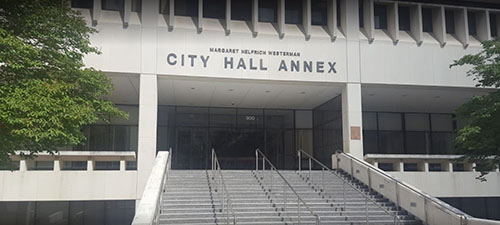Super Neighborhoods
63 - Second Ward
NAME: Second Ward
DATE RECOGNIZED: 03/17/2003
STATUS: Active
COUNCIL DISTRICT: H
MAYOR’S ASSISTANCE OFFICE: East End
CONTACT AND MEETING INFORMATION:
Ricky Cardenas, President
1st Monday, 6:30 pm, Even Months
BakerRipley Ripley House
4414 Navigation Blvd, 77011
superneighborhood63@gmail.com
Instagram - https://www.instagram.com/secondward_63
Facebook - https://www.facebook.com/Second-Ward-Super-Neighborhood-63
Twitter - https://twitter.com/SecondWard_63
LOCATION:
The Second Ward is located in the shadows of downtown Houston just east of US Highway 59.
As early as the 1840’s, the Second Ward extended from the center of downtown Houston, at the northeast corner of Main Street and Congress Avenue and extended eastward to the city limits. During the 20th Century, the cultural and geographic heart of the neighborhood became more closely identified with the area bounded by the Houston Belt and Terminal Railway, Harrisburg Boulevard, Lockwood Street and Buffalo Bayou.
The current boundaries of El Segundo Barrio are identified clockwise by Buffalo Bayou on the north side from IH-69 until it reaches the eastern boundary at the railroad running parallel to Terminal Street. The eastern boundary follows the railroad southward to the southern boundary at another railroad which runs parallel to Rusk Street. The Western boundary continues following the railroad until it turns north towards Commerce S treet. Then, it goes further north until it reaches IH-69, and follows IH-69 North to Buffalo Bayou.
COMMMUNITY DESCRIPTION AND HISTORY:
Second Ward is one of Houston’s four original neighborhoods. Frost Town, which is arguably the earliest part of Houston (pre-dates 1836) is located within Second Ward. The area is one of the city’s most historic and culturally significant neighborhoods and has a proud heritage of being a focal point in the city’s twenty-first century industrial expansion. The area has maintained a strong Hispanic identity for much of the 20th Century, and the neighborhood is so deep-rooted that it has played host to several different periods of settlement by different ethnic groups. During the mid to late 19th century, the area was largely settled by Germans, followed by Italians and Anglos, and then by Hispanics beginning in the 1920s and gaining in numbers by the 1940s. The area remains primarily Hispanic and is now home to a diverse population of many cultures, multi-generational families, an influx of new residents, and socio-economic backgrounds. The location and neighborhood culture are primary attractions to entrepreneurs investing in the re-emergence of the neighborhood as a business hub to professional services, manufacturing, food service industry, and technology.
Aside from the parts of the neighborhood located within the downtown district, much of Second ward was very rural until the turn of the 20th century. There were few named roads to take residents to and from Second Ward into downtown, located only 1–2 miles away, except for Commerce Street, Engelke, and Harrisburg. Today, organizations like the East End District, Houston East End Chamber of Commerce, BakerRipley, Ripley House, Buffalo Bayou Partnership, Rebuilding Together Houston, and Talento Bilingue De Houston promote the cultural history, entrepreneurial spirit and diversity that is the East End. The area is home to one City of Houston Landmark, two State of Texas Historic Landmarks, and numerous potential historic landmark sites and districts that date from the 1870s, the 1930s, and 1940s.
CIVIC CLUBS: (Updated 4/26/2024)
| • | Navigation Village Homeowners Association | |||
| • | Oakland Fullerton Civic Club |
PARKS:
| • | Eastwood Park | 5020 Harrisburg | 77011 |
| • | Fox Park | 500 York | 77003 |
| • | Guadalupe Plaza | 2311 Runnels | 77003 |
| • | Marron (Tony) Park | 808 N. York | 77003 |
| • | Settegast Park | 3000 Garrow | 77003 |
|
BYLAWS: |
Bylaws |







